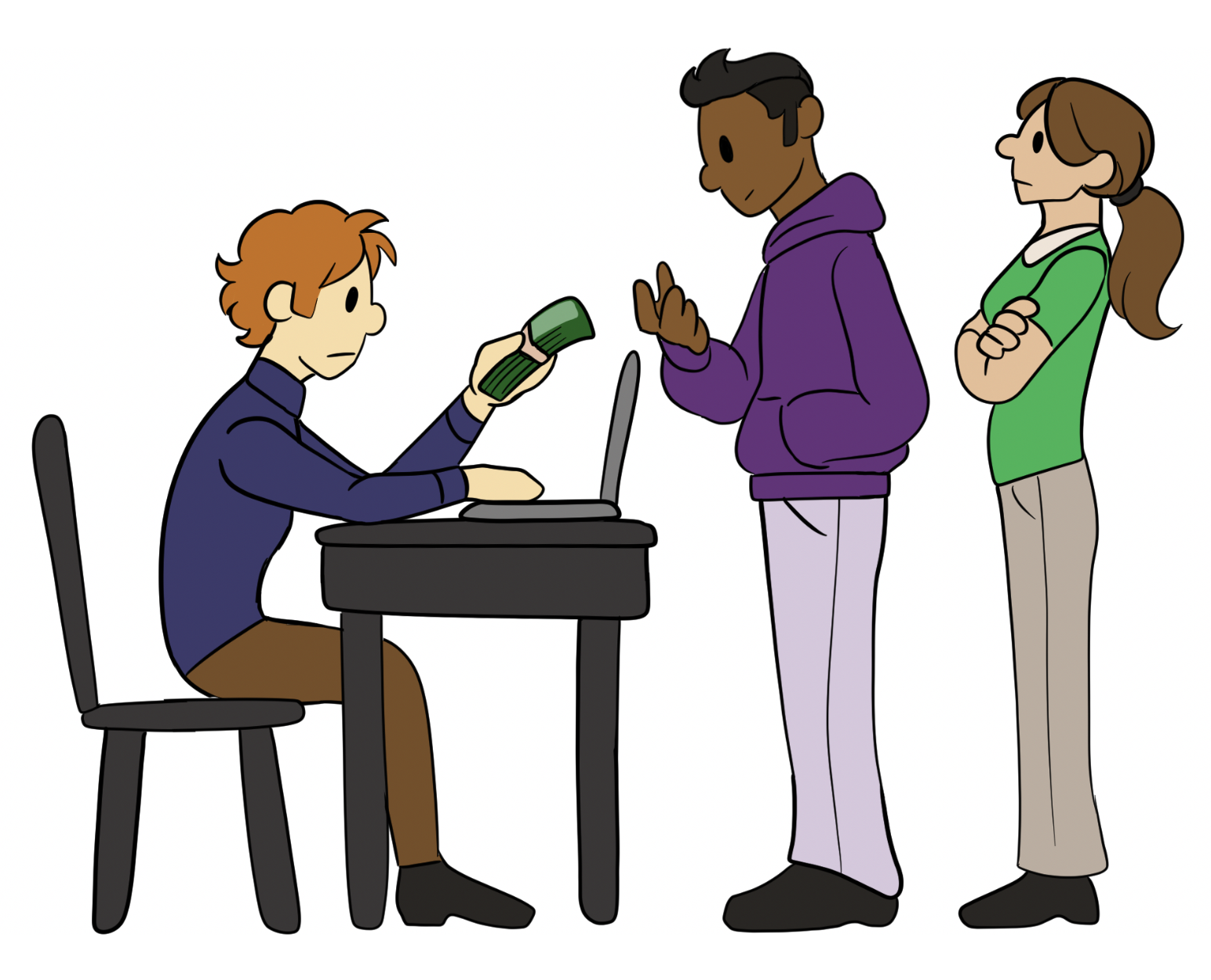Aerial drone shot of the new Blocker Hall air conditioning unit.
Liam Castellano|Marlin Chronicle
H.C. Hofheimer II Library experiences increased heat and Jason Seward, Associate Vice President for Campus Life and Operational Management explains the campus air conditioning system.
In mid-late October, the air conditioning for the H.C. Hofheimer II Library was turned off. This led to increased heat during the day, which some thought to be uncomfortable.
“When I first arrived at work, I felt overwhelmed by the heat; I didn’t want to do anything except stand outside because of the headaches it was causing,” sophomore Lamareiana Jordan said. Jordan is a work-study student, working in the Hofheimer Library as a student library assistant.
“I also noticed that the heat seemed to be turned on too early, especially since the temperatures haven’t been consistently cold,” Jordan said.
“Heating wasn’t turned on,” Jason Seward, associate vice president for Campus Life and Operational Management, said. He said the cool air was turned off due to cooler outside temperatures approaching.
Seward explained the process for deciding how and when heating and cooling is switched in different buildings.
“In older construction, especially for community style buildings like this, there were things called loop systems,” Seward said. He explained that for this system, there is a main plant, which holds a series of chillers that produce cold air, and boilers that produce heat.

The new air conditioning unit cost Virginia Wesleyan University $1.2 million.
Elliot Fylstra|Marlin Chronicle
McKenna Howenstine|Marlin Chronicle
Seward said that there are pipes underground that connect to the chillers and boilers and attach to the various buildings on campus. The water in the pipes travels to each building in a loop, meaning that any building attached to the system experiences the same or similar temperature. The library is attached to this system.
“It’s a balance we have to find where it’s: are people too warm, are people too cold? And […] where is that sweet spot?” Seward said.
“In those classic Virginia falls, where you have a run of about three days where it’s cool, then you get the days where it goes back to 80 and it’s 60 in the night, with an occasional 62 during the day and a 52 at night,” Seward said.
“What we do is, rather than have cold air running, or rather than have hot air running, we don’t run any air, meaning we don’t pump any water through,” Seward said.
“But the units still work, meaning they still circulate the ambient air. So if it’s room temperature, it circulates the room temperature,” Seward said.
“When we experienced those warmer days, the library was circulating ambient temperature,” Seward said. “Cooling wasn’t pushing through, heating wasn’t pushing through.
“We had that really small window of really cool days and really cool nights,” Seward said. He explained that the forecast was looked at, which predicted 80 degree days. “So we turned [the A/C] back on because we didn’t see any dips in those temperatures.
“It’s all or nothing,” Seward said. “So at night time when it’s 40, where the library is typically closed, and the residence halls where people are living, it gets pretty chilly in there.
“The system’s not as simple as […] turn it off and turn this on,” Seward said. “You have to shut down systems, you have to drain water out of pipes, you have to turn off pumps, you have to prime systems, and then you have to fill […] all the piping that runs underground.
“It probably takes a full day before you really start to see […] a change. But it’s a good half a day to kind of get it to the point where it’s rolling, and then several hours for the system to kind of start regulating,” Seward said.
“When the school was originally built, those […] buildings were built on that loop system,” Seward said.
“As buildings got built, they were added to the system. So now you got more buildings calling for greater demand on the same system.”
Seward said for “Godwin and Blocker hall, we added their own standalone chillers to the outside of the building.
“Blocker, which had a tremendous footprint, meaning the amount of cool water it needs, […] now it cools itself.”
Seward said that the Blocker cooling project cost the University about $1.2 million. “So it comes at a cost but it’s an efficiency thing,” Seward said. “Because when we remove those buildings, we saw greater efficiencies in those residential spaces like […] the library.”
“The new [air conditioning] unit definitely does improve the environment in Blocker,” sophomore Jaylin Diggs said. “It add[s] temperature control in the seminar room, and adds circulation.” Diggs is a work-study student and said he spends seven hours a week in Blocker hall.
“What we have is eventually […] a goal of continuing to decentralize the plant,” Seward said.
He explained that the plan is to continue to take buildings off of the loop system and switch to more efficient heating and cooling. He said, however, it comes at a cost.
On Nov. 18, Residence Life sent out an email saying that the switch to heat has been completed.
By Isaac Fick
ihfick@vwu.edu

